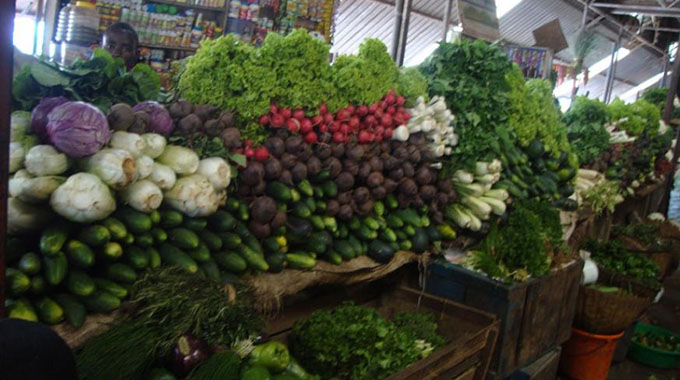Zim horticultural output jumps 13pc
Zimbabwe’s annual horticultural crops are flourishing, with production increasing by 13 percent during the 2023/24 season compared to the previous season, according to the Second Round of Crops, Livestock and Fisheries Assessment report.
The positive trend has been driven by a surge in popular crops including Irish potato, a favourite among Zimbabwean youth, which jumped by 12 percent to 673 484 tonnes from 599 550 tonnes in the previous season.
Onion production increased 6 percent, reaching 309 008 tonnes this season.
The positive trend extends to a variety of other crops, except tea, coffee, and mangoes.
These perennial crops, however, maintained a steady area under cultivation, with a slight increase from 119 036 hectares to 119 542 hectares.
Some of the stand-out performers include pecan nuts which grew by 71 percent increase, thanks to more orchards reaching their productive prime. Blueberries jumped 38 percent on the back of the growing demand for the fruit.
Avocados increased by 21 percent, with a promising 60 percent of the harvest being suitable for export.
This leaves 40 percent available for local processing and consumption, the report says.
While peas may be a bit of a downer, the overall picture for Zimbabwe’s horticulture industry is bright.
This growth signifies a thriving agricultural sector and exciting possibilities for the future.
The positive trend is particularly encouraging given the country’s ambitious target to grow its horticulture exports to US$1 billion by 2030, according to the Horticultural Development Council (HDC).
Zimbabwe boasts the potential to produce a wide range of fruits, vegetables, and flowers, and the HDC is actively working to increase production and exports.
The HDC estimates that achieving the US$1 billion target by 2030 requires an investment of US$1,2 billion to cultivate 602 000 hectares of various crops.
This investment is projected to create 150 000 jobs, significantly boosting the economy.
Currently, the industry’s export value sits at US$120 million.
Over the past few years, the Government has implemented several initiatives to revive the horticulture industry.
It has facilitated the establishment of over 200 000 hectares for joint ventures (JVs), signed at the Ministry of Lands, Agriculture, Water, Fisheries and Rural Development.
The JVs aim to boost confidence among farmers and investors.
A US$30 million Horticulture Export Revolving Fund was established to de-risk private funding for export-oriented horticulture production.
Six banks (NMB, AFC, Ecobank, CBZ, CABS) are participating in this programme, offering loans with a maximum repayment period of 36 months.
While these initiatives are promising, the HDC acknowledges some challenges in the sector.
It says the current loan structure may not be fostering broad-based growth, potentially excluding marginalised groups within the farming community.
The focus on formal and established entities excludes individual farmers from readily accessing these funds.
It also notes that the loan application process can be lengthy, often exceeding six months, discouraging potential borrowers while loan eligibility hinges heavily on audited financials, which can be a barrier for smaller farmers. – Bloomberg.











